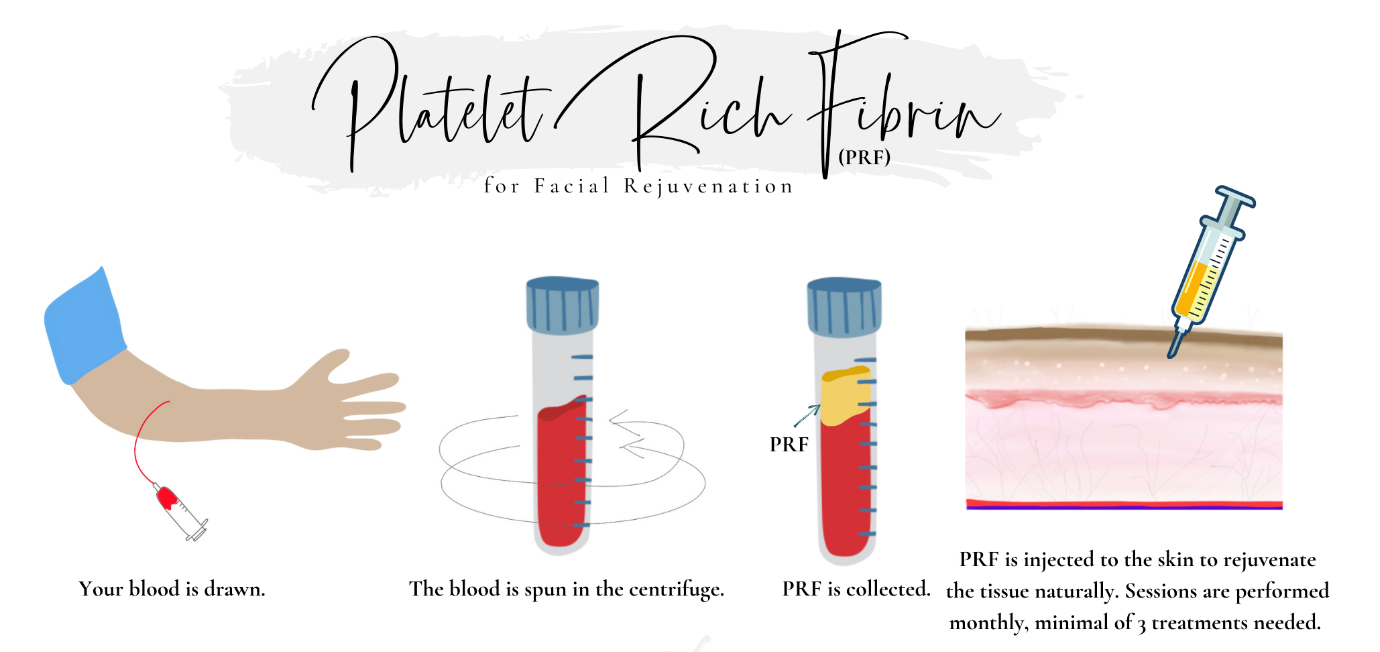 PRF is obtained by drawing a small blood sample from the patient, which is then centrifuged without the addition of anticoagulants or other chemicals. This process results in the separation of the blood into layers, with the PRF clot forming in the middle layer. Unlike PRP, PRF contains a higher concentration of platelets and leukocytes, embedded within a fibrin network that acts as a scaffold for tissue regeneration.
PRF is obtained by drawing a small blood sample from the patient, which is then centrifuged without the addition of anticoagulants or other chemicals. This process results in the separation of the blood into layers, with the PRF clot forming in the middle layer. Unlike PRP, PRF contains a higher concentration of platelets and leukocytes, embedded within a fibrin network that acts as a scaffold for tissue regeneration.
Beyond its medical applications, PRF has found a niche in regenerative aesthetics, offering a natural and holistic approach to skin rejuvenation and anti-aging treatments. By harnessing the regenerative power of the patient’s blood, PRF facials and injections stimulate collagen production, improve skin elasticity, and enhance overall texture.
This results in a youthful complexion, reducing the appearance of wrinkles, fine lines, and scars.
PRF procedures are performed by certified specialists in a clinical setting. The natural components within PRF make it a safe option for individuals seeking cosmetic enhancements without the use of synthetic substances. As a minimally invasive procedure, PRF treatments offer minimal downtime and quick recovery, making them an attractive choice for those looking to enhance their appearance and achieve natural, long-lasting results.
Benefits of PRF treatment
PRF treatment offers a range of benefits due to its natural and regenerative properties. Some key advantages of PRF therapy include:
PRF treatments are generally considered low-risk, with minimal complications. Individuals with the following conditions can usually undergo this treatment safely.
Skin rejuvenation: PRF therapy stimulates collagen production, improving skin texture and elasticity leading to a more youthful and radiant complexion.
Acne scars: PRF therapy can improve the appearance of acne scars by promoting collagen production and tissue regeneration. It helps smooth out the skin’s surface and reduces the visibility of acne-related blemishes.
Volume loss: PRF can be injected into areas with volume loss, such as the cheeks and temples, to restore fullness and create a more youthful facial contour. It provides a natural alternative to dermal fillers.
Eye rejuvenation: PRF injections around the eyes can reduce the appearance of dark circles and under-eye hollows. The growth factors in PRF promote collagen production, leading to smoother and firmer skin around the eyes.
Lip augmentation: PRF injections can enhance lip volume and definition. By stimulating collagen production, PRF creates natural-looking and fuller lips.
Neck rejuvenation: PRF therapy can improve the texture and tightness of the skin on the neck. It helps reduce the appearance of horizontal lines and wrinkles, commonly known as “necklace lines” or “tech neck.”
Hand rejuvenation: PRF injections can be used to rejuvenate the skin on the hands, diminishing the visibility of age spots, wrinkles, and thinning skin. It restores volume and improves skin texture for a more youthful appearance.
Décolletage enhancement: PRF can be applied to the chest area (décolletage) to reduce the signs of aging, including fine lines and wrinkles. It promotes collagen production, making the skin smoother and more youthful in appearance.
Skin laxity: PRF treatments can tighten mildly lax skin on the face, neck, and body. It stimulates the production of collagen and elastin, leading to firmer and more toned skin.
Uneven skin tone: PRF therapy can improve skin tone and texture by promoting the growth of healthy skin cells. It is beneficial for individuals with uneven pigmentation, sun damage, or rough skin.
Cellulite reduction: PRF injections can be used to reduce the appearance of cellulite by improving skin elasticity and thickness. The growth factors in PRF can help smooth out dimpled skin.
Hair loss: PRF injections can promote hair growth and thicken existing hair. It is often used to treat conditions like androgenetic alopecia (common baldness) by stimulating hair follicles and encouraging new hair growth.
During a PRF procedure, you can expect the following:
Procedure duration: The procedure typically takes around 30 minutes to an hour, depending on the treatment area and complexity.
After a PRF treatment, here’s what you can generally expect: